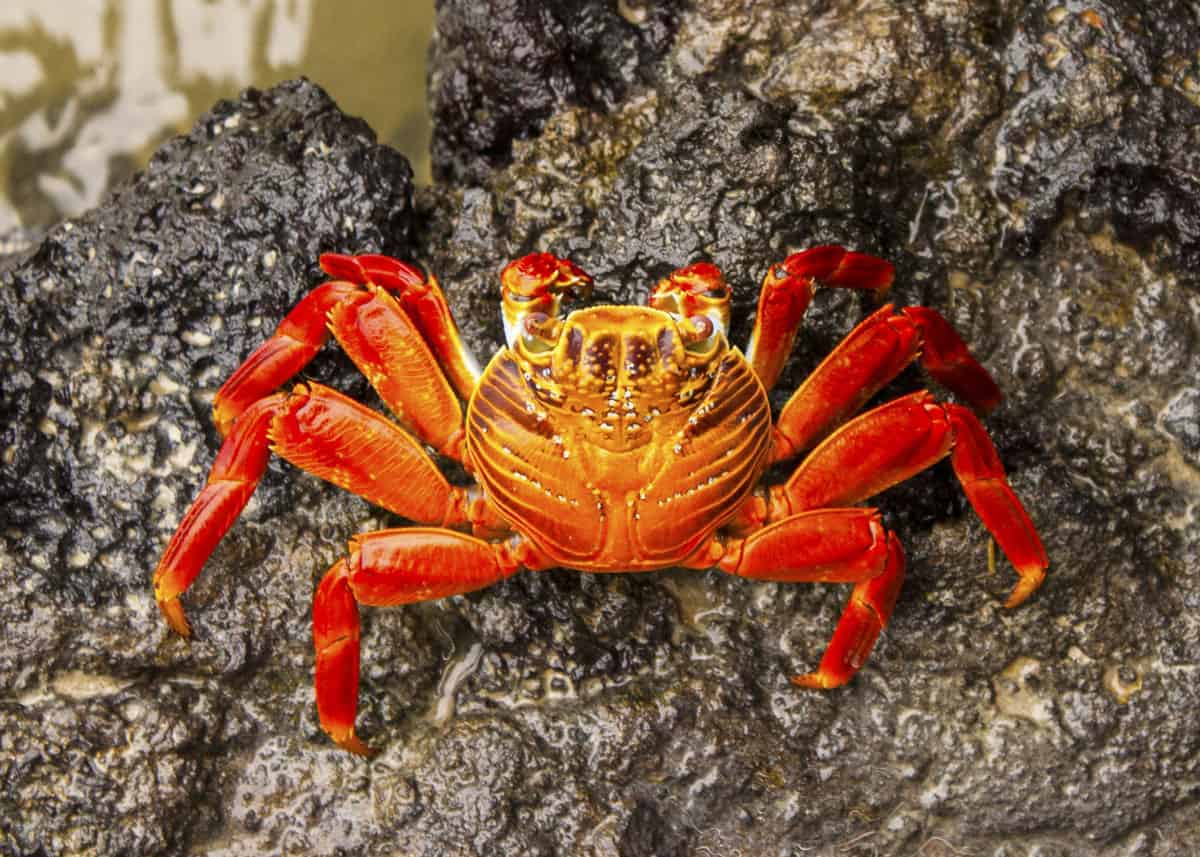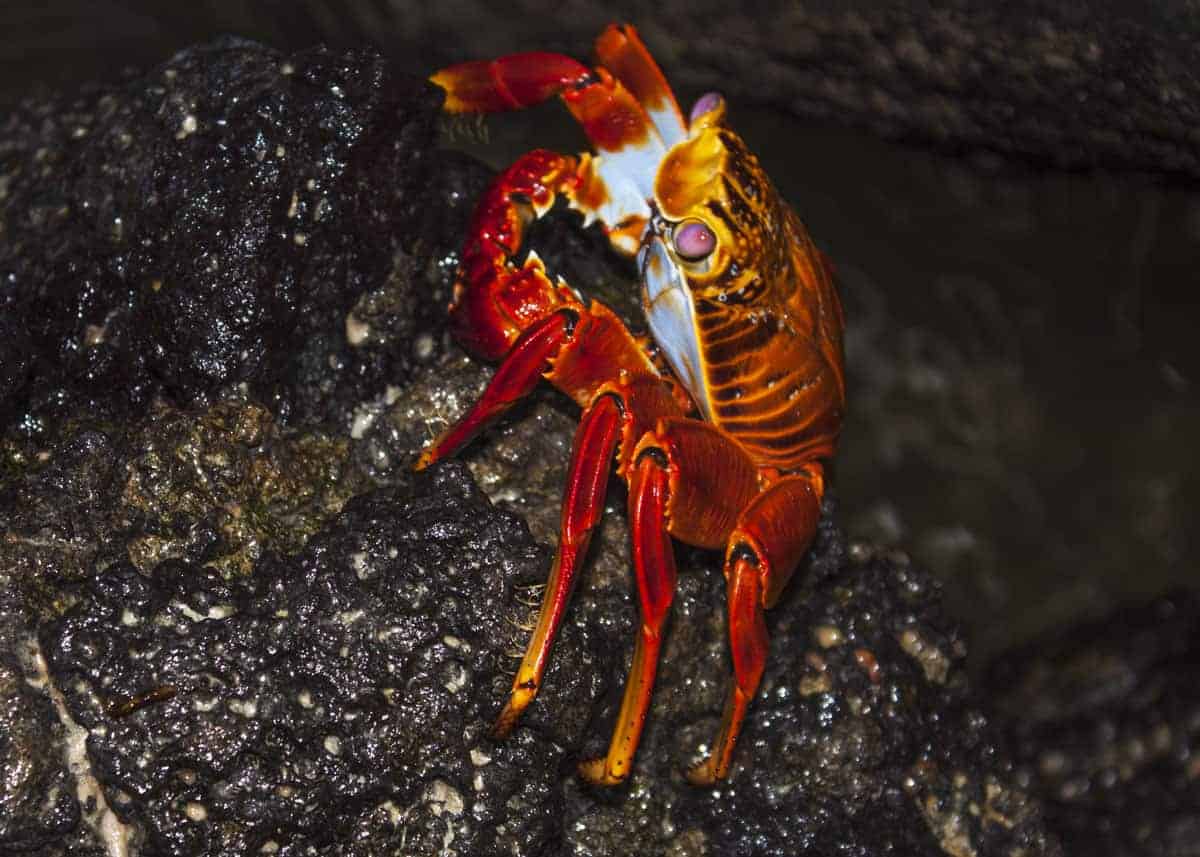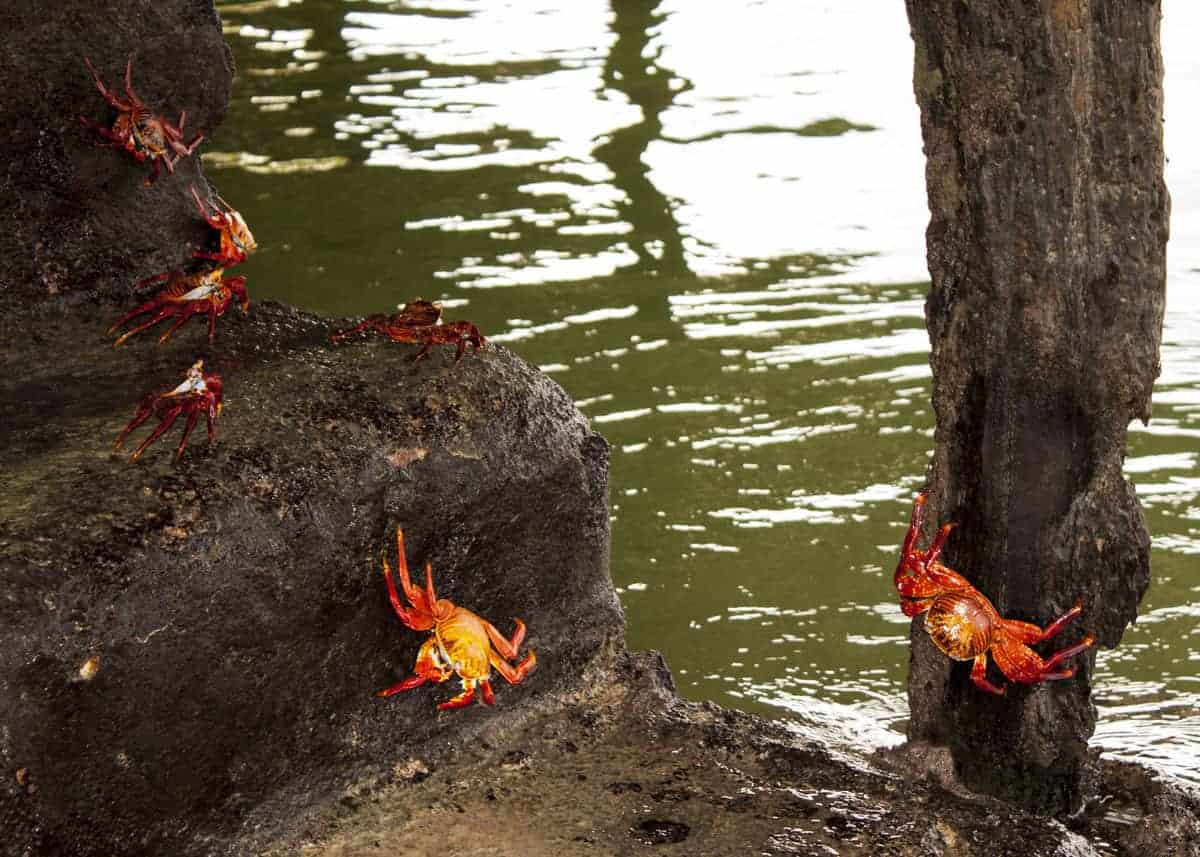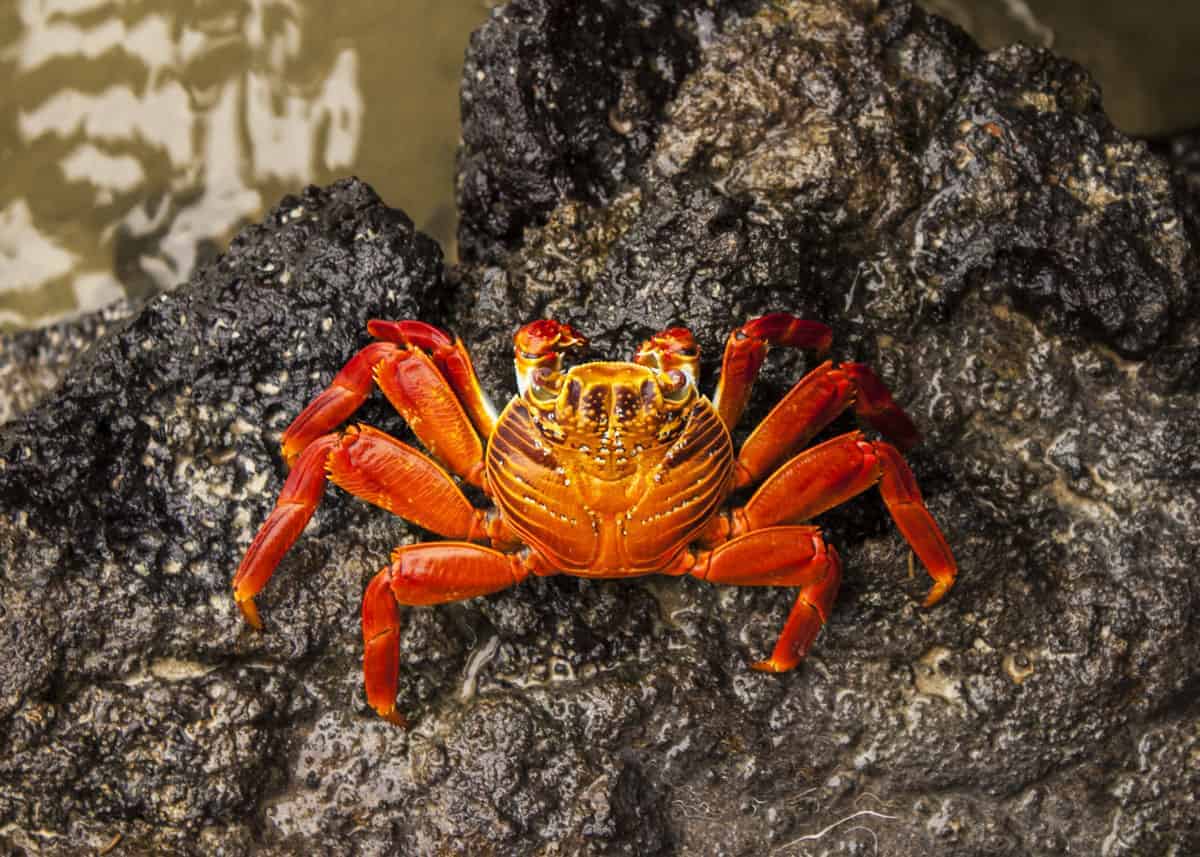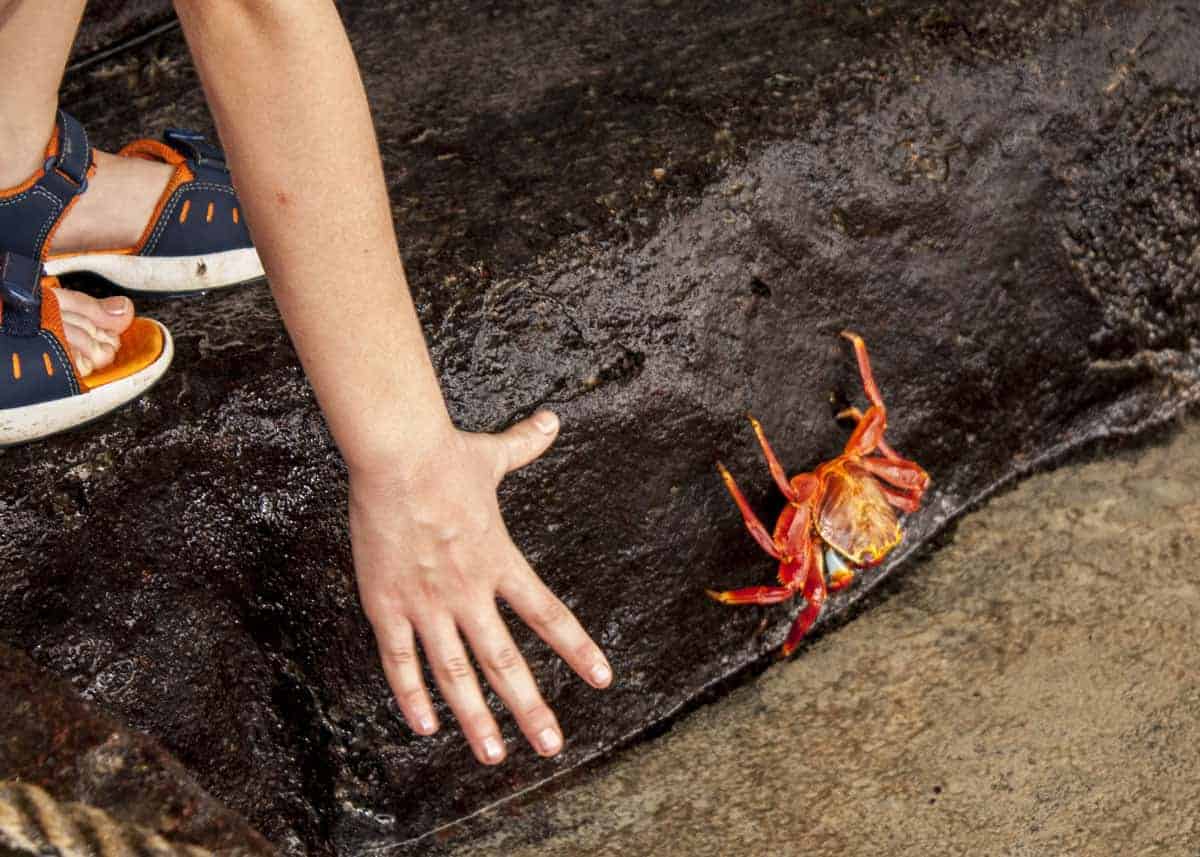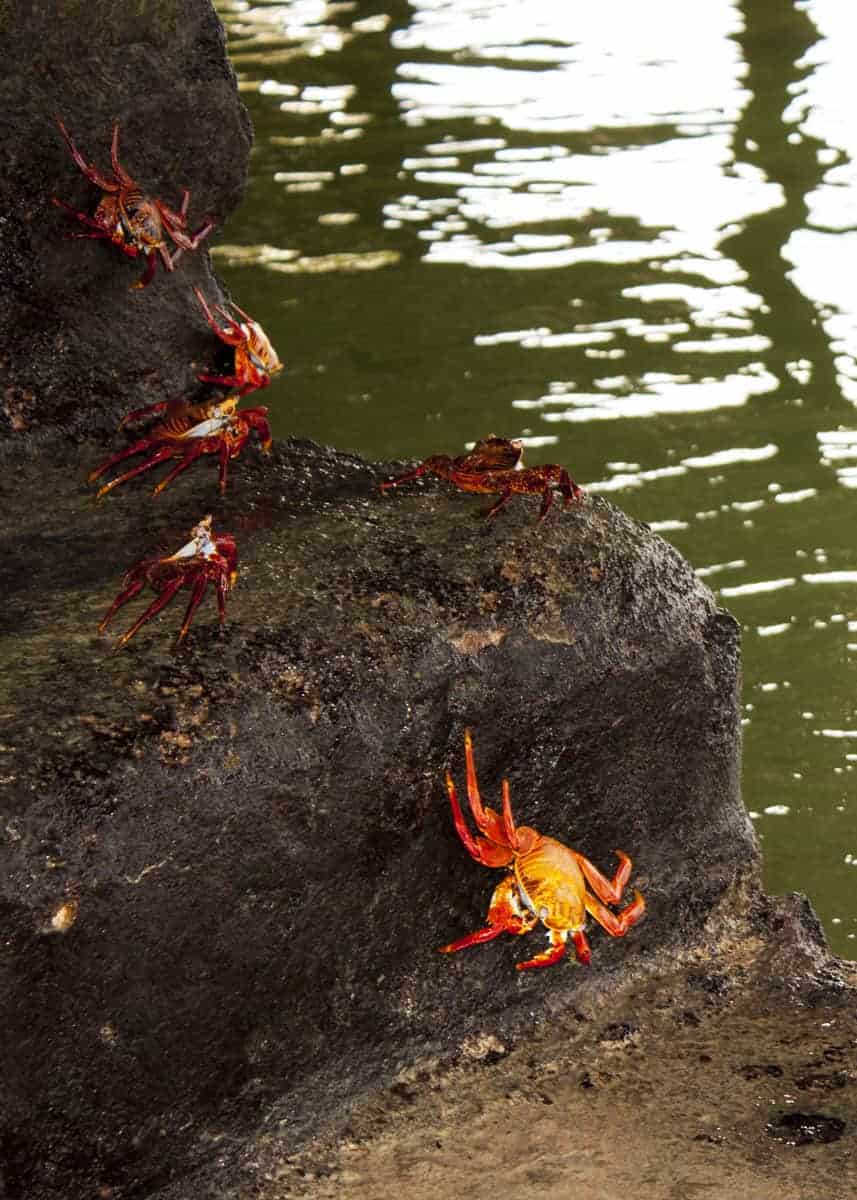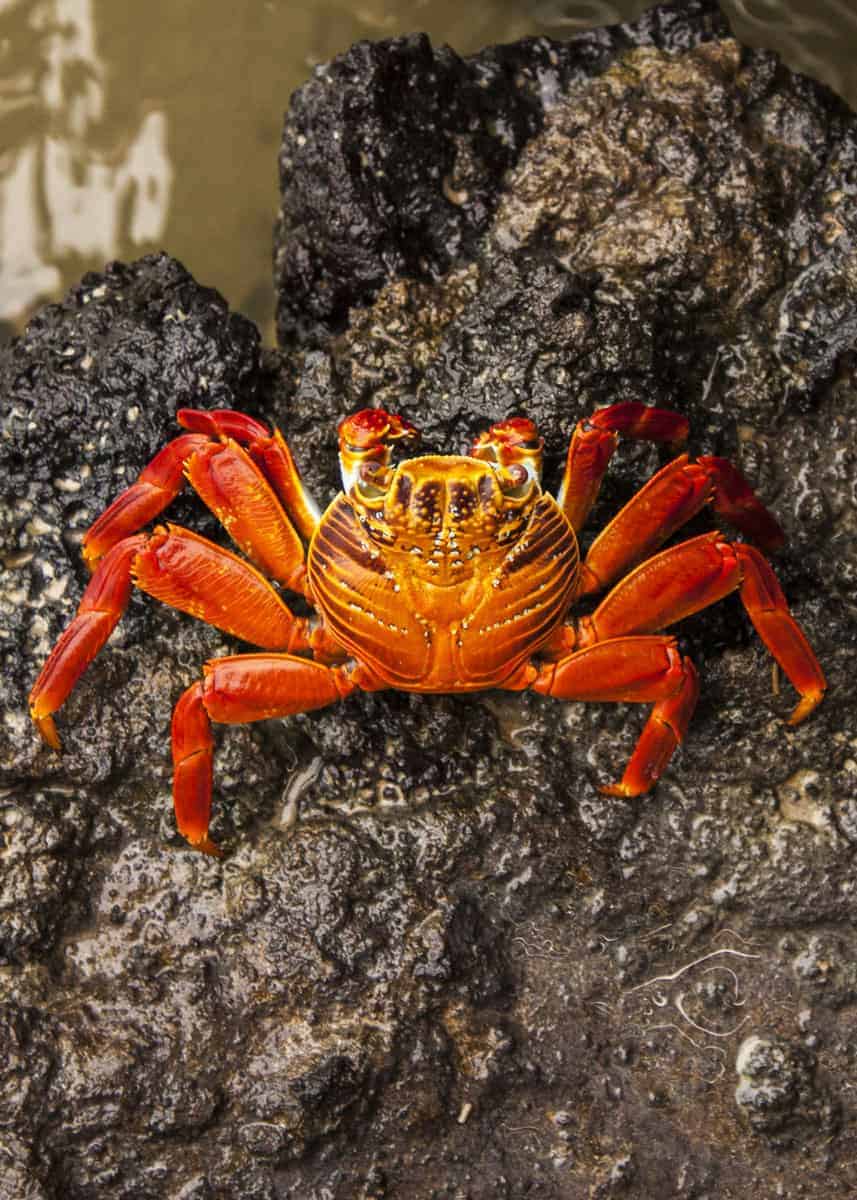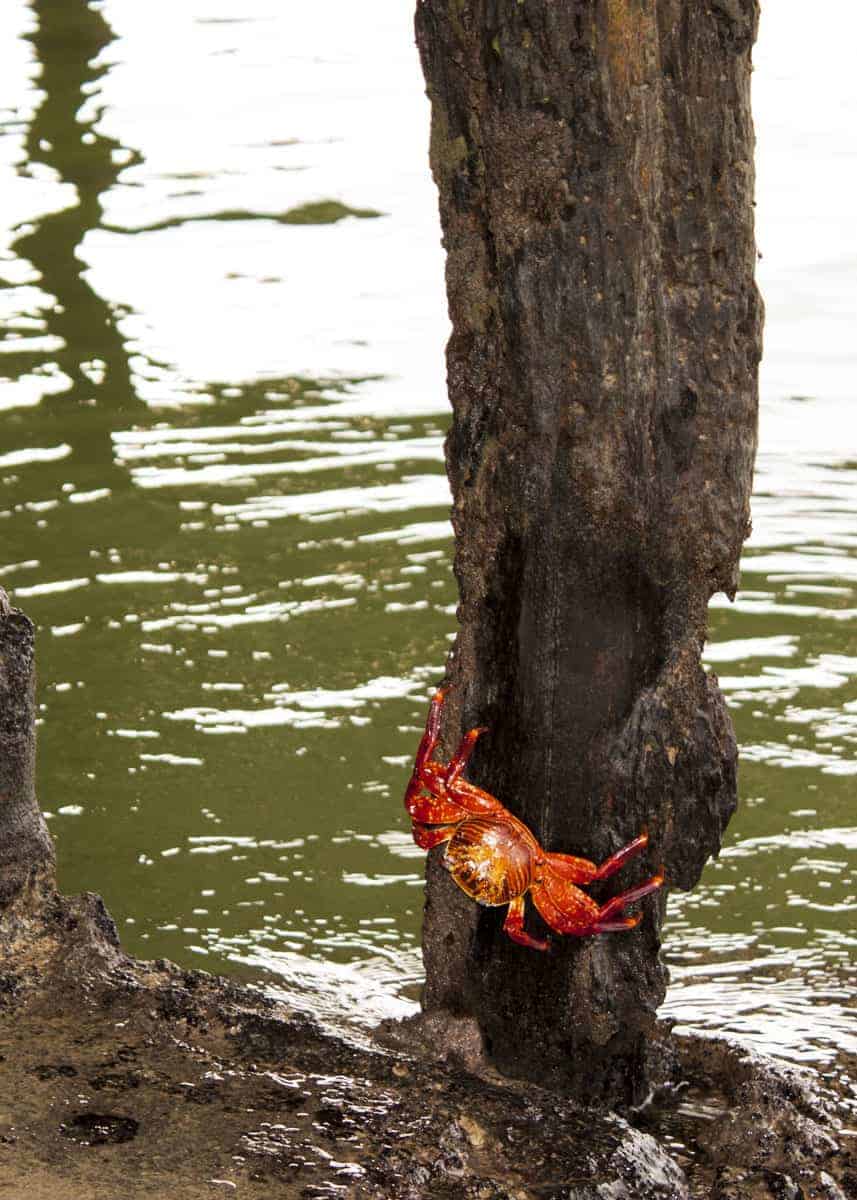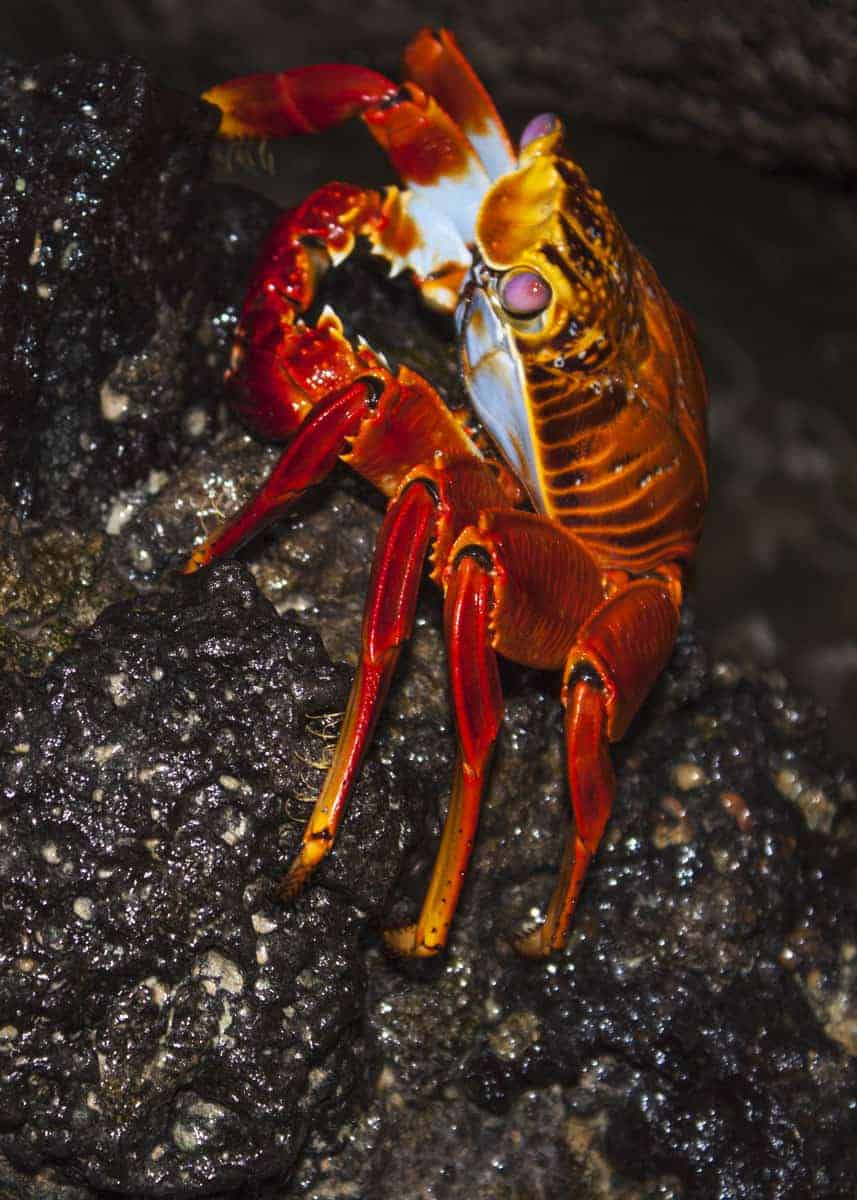22 Sally Lightfoot Crab Facts: Guide to Galapagos’s Grapsus grapsus
Sally Lightfoot crabs are easily recognizable, with their reddish-orange shell and their baby blue belly. In this post, you’ll learn 22 Sally Lightfoot crab facts, including size, diet, symbiosis, habitat, range and more. Plus lots of photos from our Galapagos trips.
Travel tip: If you’re traveling to the Galapagos, you should bring a camera with a good zoom and a decent pair of binoculars. This will increase the odds of spotting and shooting these grabby crabs.
Maybe you’ve seen them in aquariums or on a travel blog. Sally Lightfoot crabs are colorful and fascinating creatures. They were one of the highlights of our Galapagos trips – and are easily one of the most common animals in the Islands.
Sally Lightfoot Crab Overview
- Latin name(s): Grapsus grapsus
- Range: Pacific Coasts of Mexico, Central and South America, including the Galapagos Islands
- Population Status: Not Evaluated by IUCN Red List. Not threatened.
- Size: Width of carapace is 3-5 inches (8-12 cm); Weight is unknown
- Diet: Algae, young sea turtles, crustaceans, mollusks, bird eggs, dead fish, sea lion placenta, bird droppings, and ticks and parasites from iguanas
- Physical features: Colorful, incredibly agile and has an symbiotic relationship with iguanas
- Where it lives in Ecuador: On rocky shorelines of Galapagos Islands and Pacific coast of mainland Ecuador.
22 Sally Lightfoot Crab Facts
Did you know that they can walk on water and that they have an interesting relationship with marine iguanas?
Ready to learn more about them? Here are 22 Sally Lightfoot crab facts.
1. What does the Sally Lightfoot crab look like?
You will know a Sally Lightfoot crab when you see one because they are so bright and colorful. They’re shaped like a typical crab with five pairs of legs – the front two claws with pincers. Adults usually have reddish-brown legs with a body that is splashed with yellow, red and blue colors.
Interestingly enough, baby Sally Lightfoot crabs look quite different from their parents. They are much darker so that they blend in with surrounding lava to camouflage and protect them from predators.
They molt multiple times a year until they’re about 4 or 5, and every time they molt, their shell grows larger and they appear more colorful like their parents.
2. How big is a Sally Lightfoot crab?
Depending on its age, a Sally Lightfoot crab can vary in size from 3 to 5 inches (8 to 12 cm) across its carapace (sophisticated word for “shell”).
Its weight is unknown, but some people have guessed it around 8 ounces. Just for a perspective, an average Sally Lightfoot crab would probably fit in your hand just perfectly.
Here’s a shot of our daughters hand beside a Sally Lightfoot crab. She was 12-years-old at the time. The width of the crab, including its legs is about the same as her hand width.
3. Why is it called Sally Lightfoot crab?
No one is sure how the Sally Lightfoot crab got its name, but there are rumors it was named after a Caribbean dancer.
This crab is a delight to watch because not only is flamboyant like a Caribbean dancer, but it also runs and jumps in all four directions with amazing energy and agility.
This is how the famous American author, John Steinbeck, described this crab: “They walk on their tiptoes” and “disappear in a puff of blue smoke.”
4. What other crabs are known as Sally Lightfoot crab?
The Grapsus grapsus, the subject of this Sally Lightfoot crab facts post, is considered to be the true Sally Lightfoot crab, but there is another crab that shares the same name.
Its Latin name is Percnon gibbesi, and it also has other names such as short crab, nimble spray crab, and urchin crab. Unlike the Grapsus grapsus, this crab is found in the warmer climate of the Caribbean.
The Percnon gibbesi may look similar to the Grapsus grapsus, but it has a more flattened body shape and duller olive-brown colors with orange or tan bands on its legs. If you’re thinking about getting a Sally Lightfoot crab for your home aquarium, you should know the difference between these two crabs. Percnon gibbesi is a common pet and the Galapagos crab (Grapsus grapsus) is not.
5. What symbiosis does Sally Lightfoot crab have with marine iguanas?
Symbiosis what? This is where two totally different creatures mutually benefit from a relationship. More about symbiosis.
Sally Lightfoot crabs and marine iguanas couldn’t be any different from one another, but they are known to share a relationship where the Sally Lightfoot crab benefits from a tasty meal of ticks and parasites from the iguana, and the iguana enjoys free health spa treatments.
6. Can the Sally Lightfoot crab walk on water?
Yes, Sally Lightfoot crabs can walk on water for short distances. We saw this on Santa Cruz Island a few years ago. As we walked across the lava beach, crabs scurried out of the way. A few ran across the surface of the water to another rock – as distance of a few meters.
While we haven’t read about this anywhere else, they can definitely walk on water. When it’s frightened, it will skitter across the water surface like nobody’s business.
Have you seen this? Let me know in the comments!
The Galapagos sun can be harsh. Here’s our guide to choosing the best sun protection hat.
7. What is the Sally Lightfoot crab’s Latin name?
Grapsus grapsus is the Galapagos Sally Lightfoot crab’s Latin name.
8. Are Sally Lightfoot crabs aggressive?
No, Sally Lightfoot crabs are not aggressive toward humans.
But in their natural habitat, these crabs do become aggressive as they mature. Males will especially go to battle with one another when vying for the attention of a female during courtship. They will actually try to break each other’s claws off.
Otherwise, these crabs are peace-loving creatures.
9. How long do Sally Lightfoot crabs live?
It’s unknown exactly how long Sally Lightfoot crabs live in the wild due to predation.
They’ve been known to live up to 12 years in captivity.
10. What eats a Sally Lightfoot crab? Predators and Threats
Sea turtles, octopuses, tuna, moray eels, and birds like lava herons prey upon the Sally Lightfoot crab as well as feral dogs and cats that have been introduced in the Galapagos Islands.
This is why these crabs move quickly and hide in rocks to avoid becoming dinner. People don’t eat Sally Lightfoot crabs like they do other types of crabs, but fishermen do use them as bait in some parts.
Marine plastic pollution is another threat this crab faces, but fortunately, the Plastic Pollution Free Galapagos program is working toward protecting the marine wildlife in the Galapagos Islands.
11. Is the Sally Lightfoot crab endangered?
No, the Sally Lightfoot crab is not listed as endangered. In its native habitat, this crab has a stable, thriving population.
12. Sally Lightfoot crab adaptations
This crab may look and move like a Caribbean dancer, but it also boasts a few tricks that protect it from predators.
For one, it holds water in its shell to breathe through its gills when on land. But if a predator corners it, this crab will spray that water as a defense mechanism. Also, as a last resort when threatened, this crab can shed one of its legs (which is later regenerated).
This crab also has some cool adaptations that enable it to hunt. Check out #14 below.
Plan your Galapagos trip with these Galapagos travel books.
13. What do Sally Lightfoot crabs eat?
Because these crabs live in shallow water, they commonly eat algae and other plant matter. They may occasionally eat remains of dead animals like fish and mollusks.
They scavenge the shore for whatever they can find including dead fish, bird droppings, organic beach garbage, sea lion placenta and bird eggs. This may seem gross to us humans, but these crabs and their non-picky tastes help keep their ecosystem clean and healthy.
14. How do Sally Lightfoot crabs hunt?
Sally lightfoot crabs don’t so much hunt for their food as they do search for it.
Their compound eyes provide them with sharp vision, and the spiny projections on the tips of their legs help them sense vibration of movement to detect and locate food.
15. What other names does the Sally Lightfoot crab have?
Sally Lightfoot crabs are also known as “red rock crab” and the “abuete negro”.
16. At what age do Sally Lightfoot crab lay eggs?
The age at which Sally Lightfoot crabs begin to lay eggs isn’t exactly known, but it’s believed that they reach sexual maturity once their carapace length reaches around 2 inches (51 mm). Once they begin reproducing, they will typically lay eggs approximately every 24 days.
Females carry their eggs around with them on their underparts until they hatch in water. Baby Sally Lightfoot crabs hatch first as larvae which feed on phytoplankton.
After a series of molting and metamorphosis, the larvae transform into juvenile crabs that swim to the shore where they begin to scavenge like their parents.
17. Do Sally Lightfoot crabs carry disease?
I couldn’t find any reports about Sally lightfoot crabs carrying diseases, but they are living creatures, so anything is possible. They could carry Salmonella bacteria that pose a risk to illness in humans and other animals as well as various waterborne bacteria.
If you have a reference to add, please let me know.
18. Where does the Sally lightfoot crab live?
The Sally Lightfoot crab (Grapsus grapsus) lives on the Pacific Coast along Mexico, Central America, and South America including the Galapagos Islands.
19. What is the habitat of the Sally Lightfoot crab?
Sally Lightfoot crabs are found in shallow water, along the shoreline, and in places nearby the sea spray with plenty of rocks and crevices where they can easily hide.
Learn more about other Galapagos Islands animals in our travelers guide.
20. Where can I see Sally Lightfoot crabs?
You can see these crabs in their natural habitat, along the Pacific Coast of Mexico, Central America, or South America. They are easy to spot in the shallow water along the beach or scurrying along shore rocks. Just so you know, they’re fast critters, so you may not be able to catch one. And in the Galapagos, you aren’t allowed to touch them.
The Galapagos Islands is an excellent place to see Sally Lightfoot crabs, especially on the islands of Santiago, Floreana, Española, San Cristobal, and Fernandina. This is one reason of many to visit the Galapagos Islands.
21. What is the difference between a black and Sally Lightfoot crab?
If you happen to see small black crabs in the same habitat where Sally Lightfoot crabs live, you are most likely seeing baby Sally Lightfoot crabs. When these crabs are juveniles, they are black.
This camouflages them among the lava rocks and protects them from predators. As they age, they will molt many times and gradually become colorful like their parents.
22. Keeping Sally Lightfoot crabs as pets
Lots of people keep Sally Lightfoot crabs as pets. But as mentioned earlier, these are not the Galapagos crab variety.
The common Sally Lightfoot pets are from the Caribbean and have the Latin name Percnon gibbesi. These can be entertaining and helpful in keeping your tank clean.
Your Turn
What do you think of Sally Lightfoot crabs now? Would you like to see one in the wild in the Galapagos Islands? Let us know your thoughts in the comments.

